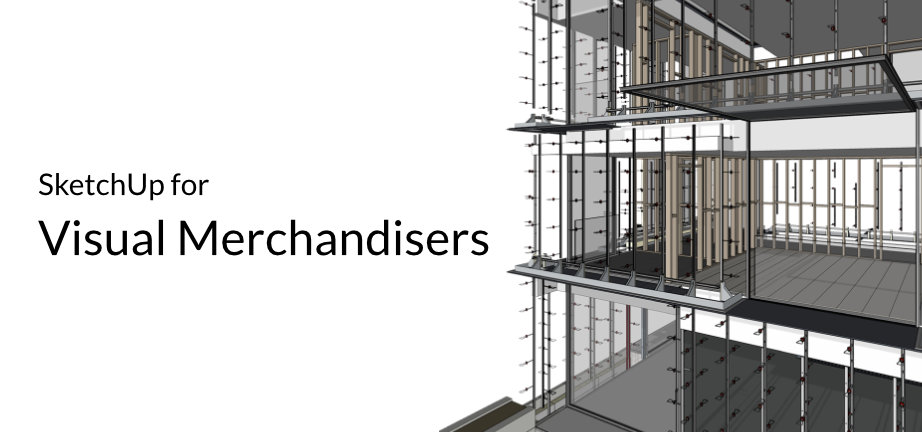Visual merchandisers play a crucial role in creating captivating shop fronts and display signs. Visual Merchandising in SketchUp is invaluable due to its user-friendly interface, versatility, efficiency, and capability to build precise geometry and apply meaningful materials. Some versions of SketchUp even include tools to handle point cloud data if you need to scan an existing space. In this blog post, we’ll explore why SketchUp has become an essential tool for visual merchandisers.
User-Friendly and Easy to Learn
One of the key reasons storefront designers should consider SketchUp is its intuitive interface. The learning curve is relatively gentle, allowing designers to quickly grasp its features. With a user-friendly experience, even those new to 3D modelling can efficiently create professional designs, making SketchUp an inclusive tool for users with various levels of expertise.
Rapid Prototyping and Iteration
These project types depend on the ability to iterate rapidly and experiment with different design concepts. SketchUp excels with this, enabling designers to quickly prototype their ideas in a three-dimensional space. SketchUp’s simple yet powerful modelling capabilities allow for quick modifications, helping visual merchandisers refine their concepts on the fly and ensure the final product aligns perfectly with their vision.
Rendering capabilities contribute significantly to SketchUp’s popularity. The software allows designers to create detailed visualisations of shopfronts and display signs without the need for additional plugins. SketchUp gives you the option to render in “white clay,” which allows you to block out shapes, such as where displays, wall bays, and gondolas go, without the client getting swamped in detail, like which wood to use on the shelves. These can be enhanced with SketchUp’s built-in ambient occlusion settings and the PBR materials released in SketchUp 2025.

Realistic Visualisation
SketchUp has a great set of options for creating realistic visualisations. SketchUp’s physically-based rendering (PBR) materials give a much more realistic look. These PBR materials render in real-time, which can make collaboration with stakeholders easier as you can make choices together and see how it looks. If you need something a bit more unique, you can also use the SketchUp Diffusion tool to generate finishes with AI.
If you’re looking to create even higher-quality images for final presentations or promotional material, then V-Ray is a fantastic option. V-Ray comes bundled with SketchUp Studio but also plugs into SketchUp Pro. This software creates photo-realistic renders quickly and efficiently.
Collaboration and Communication
Due to the collaborative nature of retail design, effective communication is critical. SketchUp facilitates seamless collaboration by allowing designers to share their 3D models easily. With its cloud-based features, multiple team members can access and work on the same project concurrently. This collaborative aspect streamlines the design process, fosters better communication, and ensures that everyone involved is on the same page.
Additionally, SketchUp Pro and Studio users can now share view-only links with those without SketchUp licences. Go into the File menu in SketchUp For Desktop. Click Trimble Connect and then click on Share A Link. This link will allow stakeholders to view the design through a web browser—no need to download any programs or apps!

Extensive 3D Warehouse and Plug-in Support
Visual merchandisers benefit from SketchUp’s vast 3D Warehouse, a repository of pre-made models and components that can be easily integrated into designs. This feature not only saves time but also provides access to a diverse array of objects, furniture, and textures. Additionally, the support for plugins enhances SketchUp’s capabilities by allowing users to customise their workflow and integrate specialised tools for their specific needs.
You can buy SketchUp now at CAD Software Direct.com

